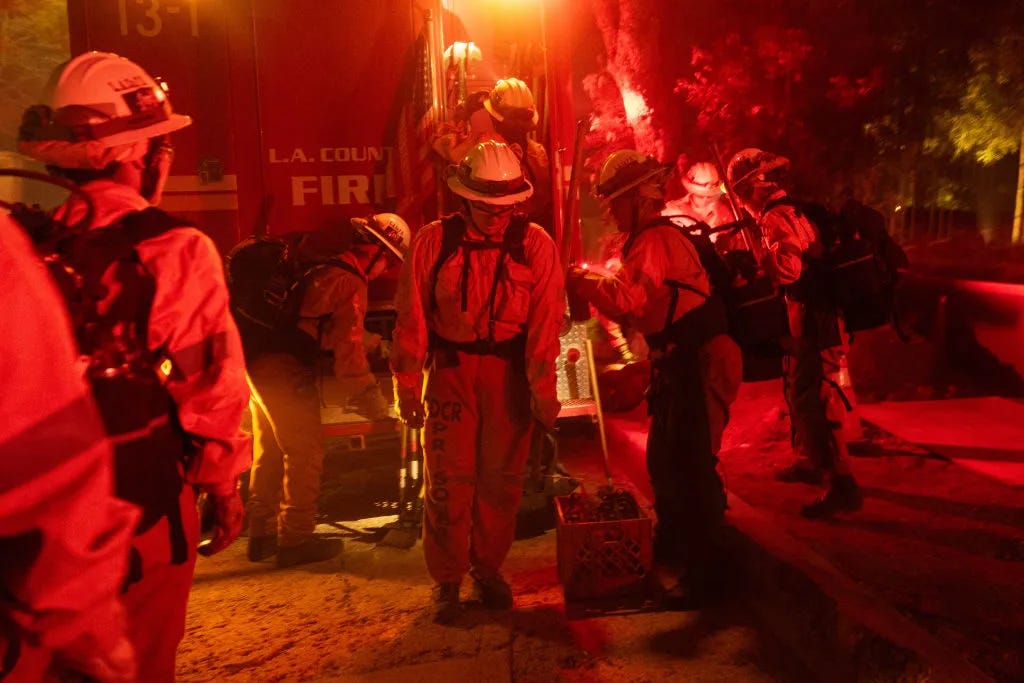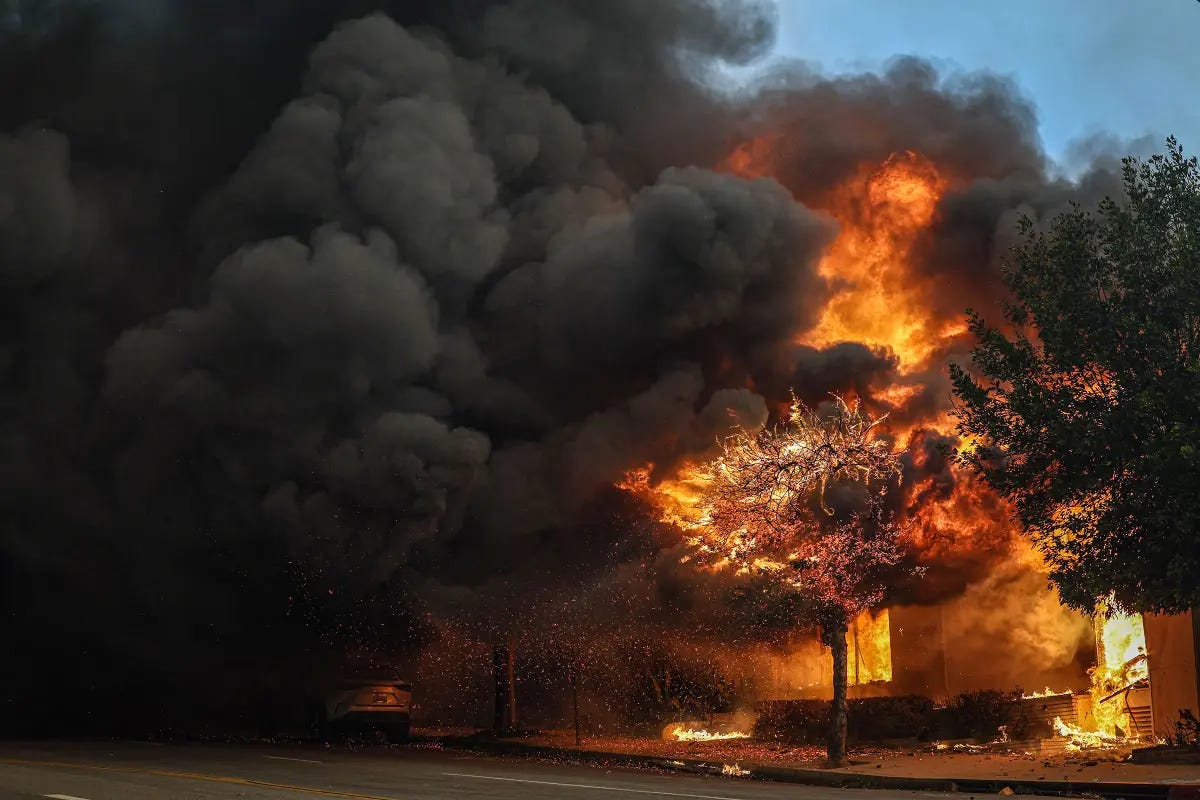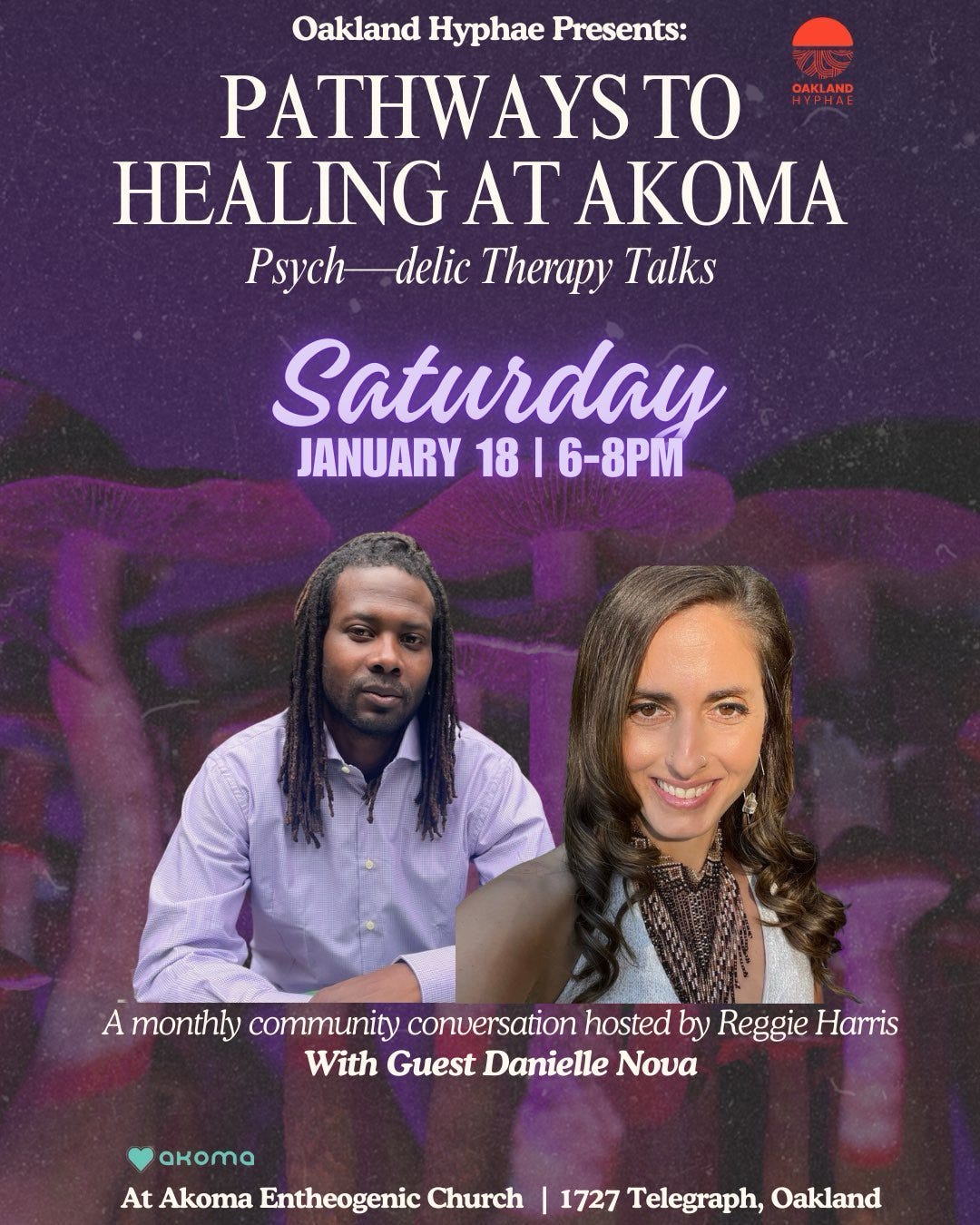California loves a good hero story. Every year, as the skies turn orange and flames swallow forests, the state puts out a press release patting itself on the back for its “innovative” use of inmate labor to fight wildfires. These stories are plastered with images of tired but resolute prisoners in orange jumpsuits, wielding axes and chainsaws, cutting firebreaks in grueling conditions. What they don’t show is the paltry $1 per hour these inmates earn or the fact that their labor keeps the state’s firefighting budget artificially low.
And, in case you thought the system couldn’t be more dystopian, California voters and lawmakers have repeatedly chosen to preserve it.
California’s Repeated Rejection of Justice
Over the past few years, several legislative measures aimed at reforming or ending forced labor in California have failed. Each effort represented an opportunity to break with the past, and each time, California balked. Here’s a timeline of the most notable attempts:
ACA 3 (2021): This proposed constitutional amendment sought to remove language from California’s Constitution that permits slavery and involuntary servitude “as punishment for crime.” The language, a relic of the 19th century, serves as the legal foundation for the prison labor system, including programs like inmate firefighting. Advocates argued that removing this clause would pave the way for treating incarcerated workers as human beings rather than expendable laborers. However, ACA 3 died in the legislature, with opponents claiming it would disrupt vital prison labor programs and cost the state millions.
Assembly Bill 628 (2022): AB 628 proposed making prison work programs voluntary, allowing incarcerated individuals to refuse participation without facing punitive measures. While the bill aimed to grant inmates greater agency, it maintained provisions allowing the state to set prison wages far below the minimum wage. Ultimately, the bill faced strong opposition and did not advance.
Assembly Constitutional Amendment 8 (2022): Similar to ACA 3, this measure sought to remove the constitutional exception for involuntary servitude as punishment for a crime. ACA 8 aligned with a broader national movement to eliminate such exceptions but failed to gain sufficient support to proceed to the ballot.
Proposition 6 (2024): The most recent effort, this ballot initiative attempted to amend the state constitution to abolish forced labor entirely, including in prisons. It was the clearest and most direct chance yet to end the practice of inmate exploitation, but voters rejected it, signaling that the state remains unwilling to part with its reliance on involuntary servitude.
The 13th Amendment: Slavery by Another Name
The foundation of California’s inmate labor system—and prison labor across the United States—rests on a constitutional loophole embedded in the 13th Amendment. Ratified in 1865, the amendment is widely celebrated for abolishing slavery. But its language contains a haunting exception:
"Neither slavery nor involuntary servitude, except as a punishment for crime whereof the party shall have been duly convicted, shall exist within the United States, or any place subject to their jurisdiction."
This exception clause, often called the “slavery loophole,” explicitly permits involuntary servitude as long as the individual is convicted of a crime. In practice, this means that incarcerated people, particularly in states like California, can be forced to work under conditions that resemble the very system the amendment was meant to abolish.
California’s inmate firefighting program is one of the starkest examples of this constitutional loophole in action. While these inmates aren’t shackled in fields, they are sent to fire lines where they endure extreme heat, toxic smoke, and life-threatening risks—all while earning as little as $1 per hour. This system allows California to sidestep paying fair wages, creating what some have described as a modern-day plantation system.
The systemic exploitation of prison labor disproportionately impacts people of color, particularly Black Americans, who are incarcerated at rates far higher than their white counterparts. This racial disparity draws a direct line from the forced labor of the antebellum South to the exploitation of inmate labor today, making the 13th Amendment’s exception clause not just a legal relic, but a tool of ongoing racial and economic oppression.
The Conditions: Sweat, Smoke, and Suffering
Inmate firefighters, many convicted of nonviolent offenses like drug possession or theft, are housed at one of 34 fire camps across California. For the privilege of being sent to these camps, inmates must pass physical tests and rigorous vetting to ensure they’re “low risk.” But once they’re in, the risks skyrocket.
Their workdays stretch for 12 to 24 hours. They hike through rough terrain, wield heavy equipment, and breathe in toxic smoke—all while earning less than $5 a day at camp and a mere $1 an hour on the fire line. For context, professional firefighters earn as much as $40 per hour, and they still complain (rightfully) about being overworked and underpaid.
Safety? Forget it. Inmates receive minimal training—typically about two weeks—compared to the extensive preparation required of professional crews. And when disaster strikes, they often lack the protective gear their professional counterparts have. Matthew Beck, a 26-year-old inmate firefighter, died in 2017 after a tree fell on him. His death was a glaring reminder of how little the system values these workers. Injuries like burns, broken bones, and respiratory issues are common, but who’s keeping track? Certainly not the state.
From the Fireline to the Unemployment Line
Proponents of the program love to wax poetic about how firefighting gives inmates “marketable skills.” The truth? Most of them can’t even use those skills once they’re released.
Professional firefighting jobs often require certifications and licenses that former inmates can’t obtain due to their criminal records. California’s own laws bar people with felony convictions from becoming emergency medical technicians (EMTs)—a requirement for many firefighting jobs. So, while they can risk their lives for $1 an hour in prison, they’re shut out of those same opportunities when they’re free.
Take Alejandro Hernandez, a former inmate firefighter who was rejected from professional departments across Southern California because of his record. After multiple rejections, he told reporters that the experience felt like a cruel joke: “They tell you you’re a hero, then remind you you’re a felon.”
There are exceptions, but they’re rare. In 2020, California passed AB 2147, which allows some former inmates to petition to clear their records, making them eligible for firefighting jobs. But here’s the catch: the process is bureaucratic and time-consuming, and it’s only available to a fraction of those who served in the program. For most, the heroic narrative ends as soon as they’re released.
Follow the Money: Who Benefits?
The real hero of this system isn’t the inmate or even the professional firefighter. It’s the state treasury. By using inmates to fill out its ranks, California saves hundreds of millions of dollars annually on firefighting costs. Instead of paying professional wages or investing in prevention strategies, the state props up its firefighting apparatus on the backs of people with limited rights and few alternatives.
Meanwhile, the inmates’ wages—barely enough to buy stationary or deodorant at the commissary—are sometimes garnished to pay restitution fees or other court-mandated costs. If there’s any economic benefit to this program, it’s certainly not trickling down to the people wielding axes in the heat of a wildfire.
Modern-Day Slavery by Another Name
Let’s call this what it is: forced labor under a shiny PR campaign. California’s inmate firefighting program is a textbook example of how marginalized people are exploited for profit under the guise of rehabilitation. The system props itself up on a dual narrative: inmates are heroes, but they’re also expendable. Their work is essential, but their lives? Not so much.
The repeated failure of ACA 3, AB 628, ACA 8, and Proposition 6 wasn’t just a missed opportunity—it was a moral failing. By refusing to eliminate the vestiges of slavery from its constitution and labor practices, California has chosen to prioritize profit over people. It’s an uncomfortable truth, but one we can’t ignore: the same state that claims to lead the nation in progressive values is running a program that wouldn’t look out of place in the 19th century.
The Way Forward
This system of exploitation must end—not later, not incrementally, but now. California has the resources, creativity, and moral obligation to create real pathways to rehabilitation and opportunity. Pay inmate firefighters a fair wage. Remove licensing barriers that keep them out of professional careers. Invest in prevention and community resilience instead of relying on a system that preys on the incarcerated. Most importantly, stop clinging to a constitutional loophole that belongs in the graveyard of history.
The choice is clear: California can either continue burning through human dignity, or it can lead the nation in extinguishing the flames of modern slavery. Until then, every inmate who risks their life for $1 an hour stands as a living indictment of the state’s hypocrisy. Let’s stop praising these incarcerated workers as heroes while treating them as disposable. True progress demands more. It demands action.
On Another Note: Join Us at Pathways to Healing
As we explore consciousness, wellness, and sacred medicine , it’s vital to create spaces for dialogue, healing, and meaningful change. That’s why we invite you to join us at Pathways to Healing at Akoma with Danielle Nova, a transformative event dedicated to exploring solutions to systemic harm and fostering resilience within our communities.
When: Saturday, January 18, 2025
Where: Akoma Entheogenic Church 1727 Telegraph Ave.
Time: 6:00 PM – 8:00 PM
Let’s come together to share, heal, and imagine a future rooted in justice and equity. Danielle Nova will lead an inspiring program that empowers participants to take actionable steps toward advocacy, healing, and systemic reform.
Reserve Your Spot Today:
Akoma is an entheogenic church located downtown Oakland at 1727 Telegraph Avenue where you can get all of your sacred medicine needs met.
Let’s move forward—together!
-Reggie
PS: Let us know how you’ve been impacted by these fires in California or how youv’ve been impacted by the prison system buy filling out the survey below!







